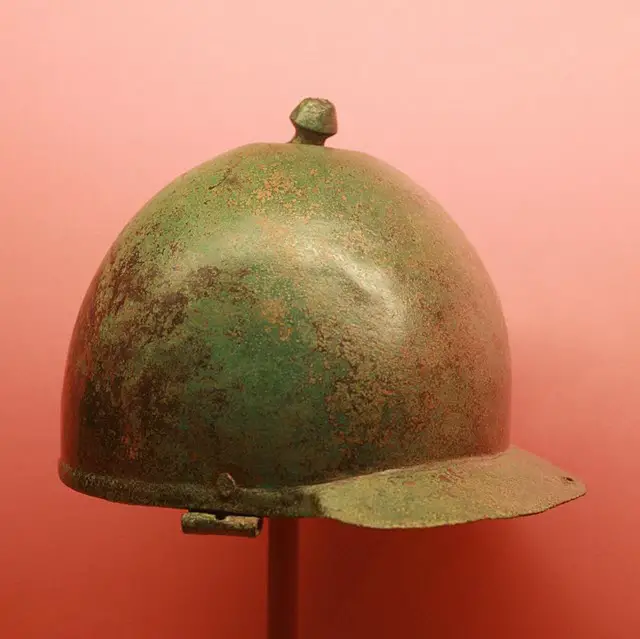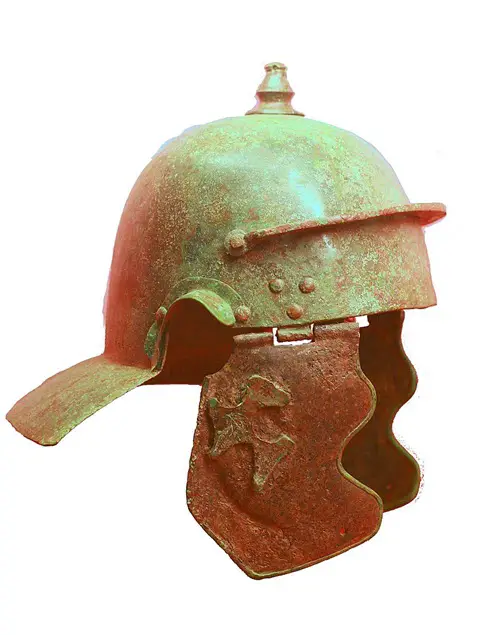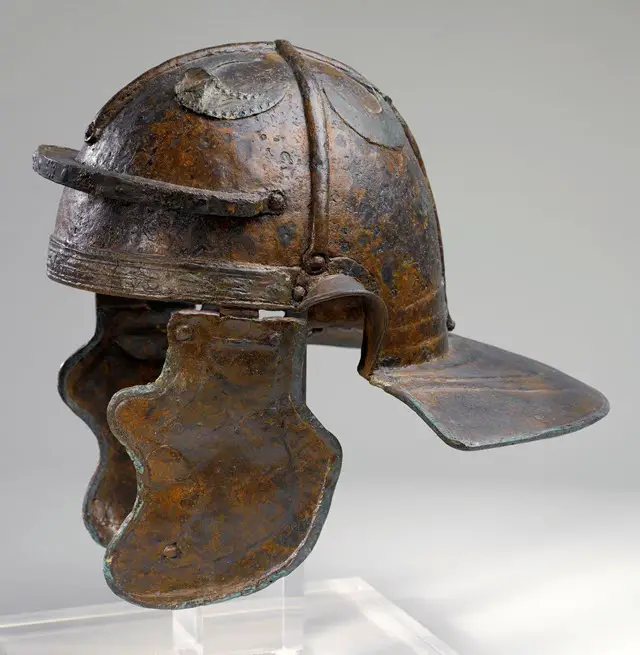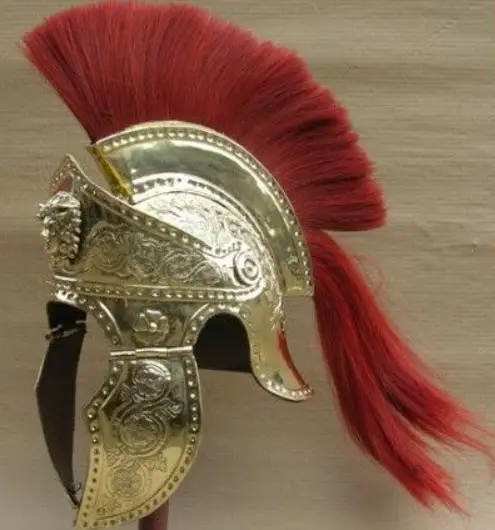The Romans have always impacted the ancient and modern world with their creative, innovative, and inspiring inventions. The Roman Helmets are one of the essential battle tools used by the Romans to be a part of numerous victorious events.
The helmets were made especially for two purposes, one for Roman military men and for the Roman Gladiators. Galea was a special helmet for Roman Soldiers, and the Etruscans and the Celtics influenced it.
The other helmets, including Montefortino, Imperial Gallic, Imperial Italic, and Coolus, were among Ancient Rome’s most used helmets.
Here is the list of different types of helmets used by the Roman Legionaries and soldiers during various campaigns and battles.
The Montefortino Helmet
Content

Source: Wikimedia Common
The Montefortino Helmet was one of the first helmets used in ancient Rome. It was the standard helmet preferred by the Roman Republican Legionary.
However, it originally belonged to the Celtic legionaries and was adapted by the Romans in around 3000 BC until the 1st Century AD. The Celts wore the original Montefortino and were named after an Italian region that first made the helmet.
The Montefortino Helmet was made up of brass and was round with a raised central knob. For the safety of the neck area, it had a short curved neck guard.
The designs of this helmet kept on changing and being modified until the 1st Century AD. The helmets with similar can also be found in various parts of Spain, Gaul, and Italy.
Roman legionaries used this helmet during the Pyrrhic Wars and a campaign against Hannibal Barca’s Carthagian armies.
Coolus Helmet

Source: Wikimedia Common
Coolus Helmet was the helmet made after the Montefortina Helmet with some modifications and editions in it. It was hemispherical, made using brass, and had a very simple design.
The name Coolus was derived from Coolus, a commune in the Marne department, France. It was introduced around 500 BC where the Roman legion of Julius Caesar used it for the first time. Since then, the helmet was used by all the Roman legions, and its use lasted for over 150 years.
The main objective of this helmet was to protect the legionaries, for that it had minimum use of decoratives and designs.
The significant modifications included the addition of cheekpieces to protect the face area of the soldier. The flat neck guard was added with a proper cutout around the ear area to give better hearing of command to the soldiers.
Similarly, a unique visor was added to protect soldiers from downward cuts or attacks.
The imperial Gallic helmet

Source: Wikimedia Common
The Imperial Gallic Helmets were made after the Coolus Helmets with some modifications and editions. Like the Montefortino Helmets, these helmets were made by the Celtic craftsmen and adopted by the Roman Legionaries.
These helmets were made with iron and brass and included cheek pieces, embossed eyebrows, and a long-wide piece around the neck area. The addition of the eyebrows protected the soldiers around the eye areas.
The Gallic Helmets were sub-divided into three kinds, Imperial Gallic G, Gallic H, and Gallic I. Gallic G was the typical mid 1st Century legionary helmet used until the 2nd Century AD.
Gallic H, though similar, was made with a modified style of eyebrows and a bit more slope around the neck guard.
Gallic I, designed in a similar style and same time, was made with cupric alloy instead of iron.
The Imperial Italic Helmet

Source: Wikimedia Common
The Imperial Italic Helmet was initially made roughly. It lacked proper eyebrows, neck, or ear guard. It was modified after the Wars of Trojan in around 98 to 117 AD as the enemy’s attacks passed through the Roman shield puncturing the Italic Helmet.
Since then, the helmets were made to protect the skull, neck and had a standard feature of adding crossbars from 125 AD. They included cheek pieces, ear guard, wider – more prominent neck guard, crossbars, and increased girth of the visor.
Like the Gallic Helmet, it was subdivided into multiple types, Imperial Italic Helmet D, E, G, and H. The most produced helmets of this group were the Italic D and E as they had more decoratives than the rest of the Italic helmets.
The Late Roman ridge helmet

Source: Wikimedia Common
The Late Roman Ridge helmet was made around the 3rd Century, and since then, the use of the Imperial Helmet was minimized. However, Rome was not the first to use this, as it was first used by the soldiers of the Pre-Islamic Iranian Empire.
The helmets were made using pieces of metal and had smaller faceguards. It was the first Roman Helmet to include a nose guard. The nose guard was attached using a leather strap.
Like, Italic Helmet, these helmets too were well decorated with precious metals. They were used by all the soldiers involved in various Battle tactics used by Roman – infantry and cavalry.
The Praetorian helmet

Source: Wikimedia Common
The Praetorian helmet was a special helmet worn by the Praetorian Guards, the bodyguards of the Roman generals and Roman Emperors.
A particular unit of force was selected as the Praetorian guards as they had to deal with both the attacks from the countrymen and barbarian foes. Even the helmets were made with special designs and craftwork.
These helmets were tall with detailed metalwork and had a special red plume on top of the helmet. These helmets, like other helmets, had effective cheekpieces with a long neck guard to protect the enemy’s attacks on the neck, face area, and skull.
Conclusion
The ancient, medieval, and modern history had been inspired by the Roman Empire and the Roman inventions since the early days. The Roman Helmets are another masterpieces that Roman created for their use and gave ideas to the other Empires.
These unique, decorative, and practical helmets helped the Roman Legions win over numerous campaigns and battles.

“The Roman Helmets are another masterpieces that Roman created for their use and gave ideas to the other Empires.”
More like they stole all their helmet ideas from the Gauls and the Persians.